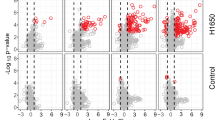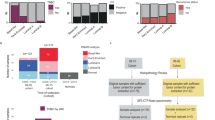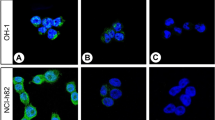Abstract
The protein and glycoprotein composition of Triton X-100 extracts of breast biopsies from 17 women with benign breast disease and from 11 women with invasive breast carcinoma were investigated using electrophoresis in SDS-containing gradient polyacrylamide gels, followed by Coomassie Blue (CB) staining and the binding of radio-iodinated wheat germ agglutinin (WGA). Patterns were analysed after the CB-step for differences in protein composition, and after the WGA-step for differences in glycoprotein composition. Tissue extracts from patients with benign breast disease have less CB stained bands than similar extracts from the cancer patients. A particular consistent change was the appearance of an extra band at 58 Kdaltons in the cancer extracts. In contrast to the CB results, WGA detected less major bands, in the 40-60 Kd region, in the cancer extracts than at similar locations in benign extracts. Analysis of blood sera using the above techniques suggested that certain serum proteins could account for some of the WGA changes, but not the changes after CB staining. However, residual contamination of the specimens by blood proteins seemed unlikely because of the washing procedure used, unless these components were very strongly associated with the tissue. Differential synthesis of serum proteins by benign and malignant breast tissue may also explain some of our findings. Examination of the histopathology adjacent to the extracted tissue suggested that the degree of reduction in WGA-binding may be related to the extent of local invasiveness. Other animal and human studies suggest that reduced glycosylation of tumour-associated proteins may be linked to increased malignancy. The current findings may reflect a general pattern of change in tumour glycoprotein composition linked to malignant expression.
This is a preview of subscription content, access via your institution
Access options
Subscribe to this journal
Receive 24 print issues and online access
$259.00 per year
only $10.79 per issue
Buy this article
- Purchase on Springer Link
- Instant access to full article PDF
Prices may be subject to local taxes which are calculated during checkout
Similar content being viewed by others
Rights and permissions
About this article
Cite this article
Ng, R., Roberts, A., Wilson, R. et al. Analyses of protein extracts of human breast cancers: changes in glycoprotein content linked to the malignant phenotype. Br J Cancer 55, 249–254 (1987). https://doi.org/10.1038/bjc.1987.48
Issue Date:
DOI: https://doi.org/10.1038/bjc.1987.48



